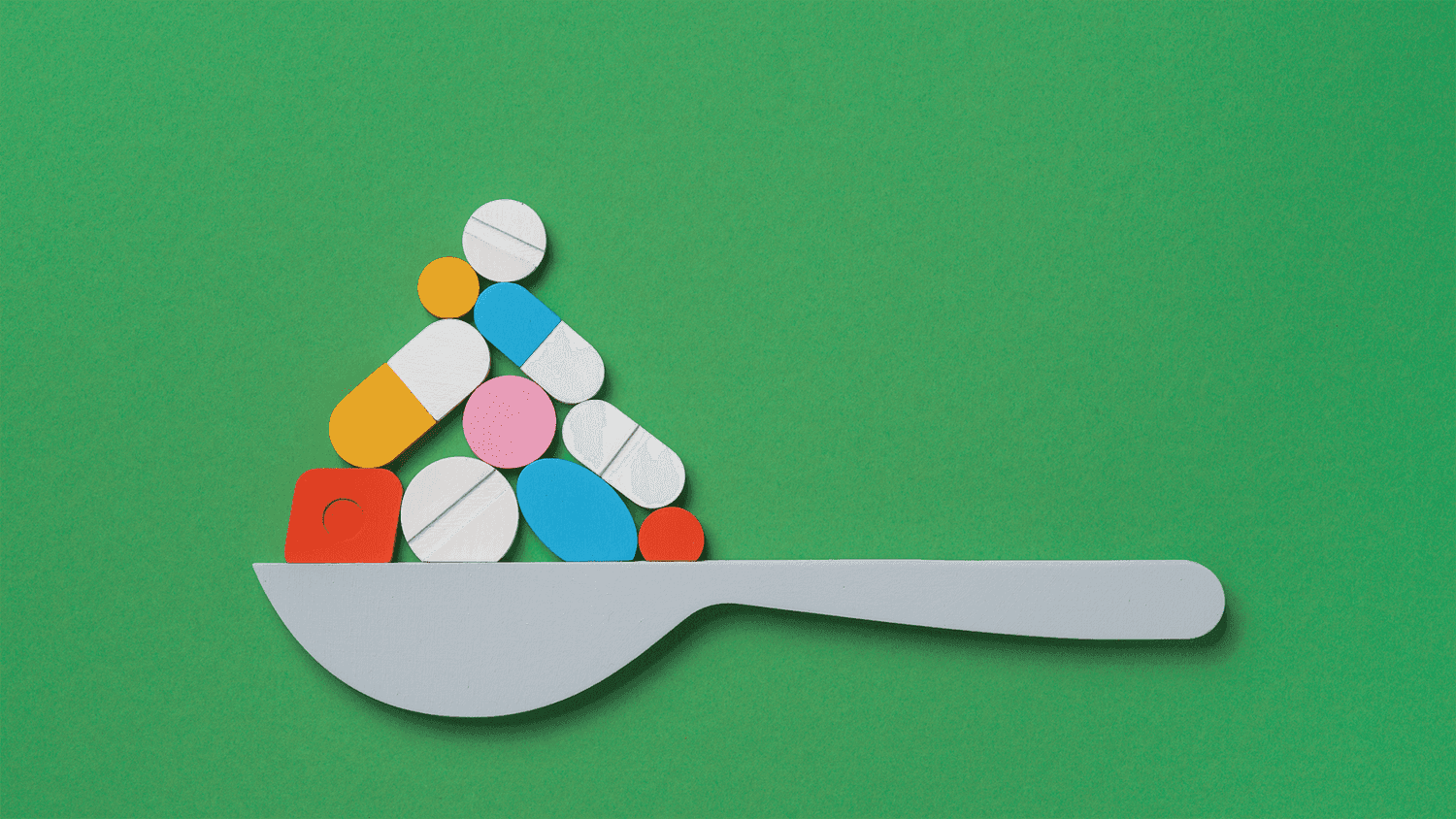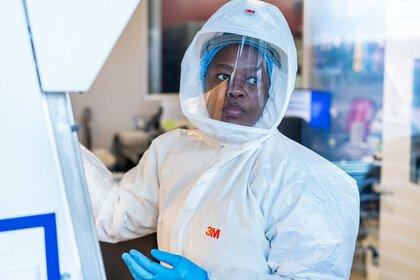
Why is it so hard to develop new antibiotics?
Discovering new antibiotics and bringing them to market is a formidable challenge – but one we need to solve if we want to enhance our protection against the growing threat of drug-resistant infections. Here’s why we need to tackle this challenge head-on and what it takes to develop new antibiotics.

Why do we need new antibiotics?
The discovery of the first antibiotic, penicillin, over 90 years ago, has revolutionised modern medicine. Since then, antibiotics have become one of the most common classes of drugs – used to prevent and treat infections, and make possible complex surgeries that have become routine, from caesarean sections to hip replacement surgeries and organ transplants.
But antibiotics are not as effective as they used to be. Over time, certain bacteria, sometimes called ‘superbugs’, have adapted and evolved to resist the effects of the drugs designed to kill them. Our collective overuse of antibiotics – in humans, animals and plants – has accelerated this process.
Today, drug-resistant infections are a serious threat to people’s health. Over 1.27 million died in 2019 because of infections that can no longer be treated with existing drugs. Discovering new antibiotics, able to kill drug-resistant bacteria, is essential to saving modern medicine.
But that’s only part of the solution, as over time bacteria will learn to resist the new drugs too. To stay ahead of the game in this constant race against resistance, we also need innovations in vaccines, diagnostics, prevention and surveillance.
Why is it so difficult to develop new antibiotics?
No new classes of antibiotics have been discovered since the 1980s.
A class defines a group of antibiotics that have a certain way of working – for example by killing bacteria or by stopping them multiplying – and are effective against certain types of infections.
The antibiotics that have been brought to market in the past three decades are variations of drugs that have been discovered before.
Discovering and developing genuinely new antibiotics is challenging. The science is rigorous, and the research and development process is time-consuming and expensive, and often fails.
It can take 10-15 years and over $1billion to develop a new antibiotic.
Stages of antibiotic research and development (R&D)
- Discovery: The discovery process starts with basic research to identify organisms that produce antibiotic substances.
-
Pre-clinical development: Thousands of possibilities are tested, which can take years. While finding substances that kill bacteria is easy, it’s much more difficult to discover and develop substances that are not toxic to humans.
-
Clinical trials: Promising candidates move into clinical trials, where they are tested for safety and efficacy in people. Clinical trials usually run in three phases and are expensive and complex. They require resources, infrastructure and expertise of large pharmaceutical companies. The final phase of trials – and the trials needed after an initial product launch – can account for more than 80 percent of the total spend to develop a new drug.
-
Approval: If a new drug proves safe and effective, it needs to be registered with a government drugs regulator and approved by regional regulators, such as the European Medicines Agency, before being legally prescribed in a country. The approval process tends to be slow and full of regulatory hurdles, adding to the costs and timeline.
-
Marketing: More money is then spent on marketing. Despite these efforts, it can be very difficult to get doctors and health systems to buy and use new antibiotics. And, as the last line of treatment against certain infections, they need to be used sparingly to limit the development of drug resistance.
Why is the antibiotic market broken?
The current economic model for developing new antibiotics is failing. Companies invest heavily in bringing new drugs to market, but struggle to recover their costs or make a profit.
New antibiotics are considered a 'last resort’ against dangerous bacteria. To limit the development of resistance, they need to be used sparingly and not sold in large volumes. Plus, compared to more expensive treatments, antibiotics tend to be quite low in price.
The combination of low sales volumes and low prices limits the profit potential for companies. As a result, many large pharmaceutical companies have pulled out of antibiotic development. In the 1980s there were 18 multinational companies committed to antibiotic research; today there are only a handful.
Antibiotic research and development is now primarily driven by small biotechnology companies. In recent years, they have made some exciting scientific breakthroughs, like a potential new antibiotic to treat serious bacterial infections, developed by Bugworks.
Many have been funded through initiatives such as CARB-X – a partnership between governments and philanthropic organisations like Wellcome – through what is called ‘push’ funding.
However, scientific breakthroughs don’t guarantee success. More funding is needed to see drugs through the expensive process of clinical trials, registration and coming to market. Without early-stage funding, it becomes much more difficult to find investment.
Additionally, bringing a drug to the market doesn’t guarantee success either, as shown by the bankruptcy of many biotechnology companies in the recent years.
The question of how to make antibiotic research and development sustainable remains a challenge.
How many new antibiotics are on the horizon?
At the moment, there aren’t sufficient drugs in the development pipeline to deal with the growing threat of antibiotic resistance.
According to the World Health Organization, there were around 45 antibiotics in clinical development in 2021. Of these, only 27 targeted priority pathogens. Many of these will only bring limited benefits compared to existing treatments. And of these 27, only six target Gram-negative bacteria, which are the most dangerous resistant bacteria and can cause severe infections like pneumonia, bloodstream infections or meningitis.
The pre-clinical pipeline includes more innovative and diverse candidates – over 200 antimicrobial agents were in early-stage testing in 2021. But it will take up to 10 years for the first of these drugs to make it to market.
And many promising candidates will fail along the way. For antibiotics in existing classes, on average, only one for every 15 drugs in pre-clinical development will reach patients. For new classes of antibiotics, only one for every 30 candidates.
With large pharmaceutical companies continuing to abandon antibiotic research, small and medium-sized companies now dominate the space – they accounted for around 90 percent of the new antibiotics in development in 2019. But they face many challenges in trying to bring new drugs to market and making them accessible.
Innovation also comes from not-for-profit organisations. For example, the drug pretomanid, which was approved in 2019 for patients with highly drug-resistant forms of tuberculosis, was developed by TB Alliance.
While non-traditional development pathways are valuable, strengthening the antibiotic pipeline requires ambitious solutions to retain and attract new investment into antibiotic research and development.
That’s why industry-led organisations like the AMR Action Fund, funded by Wellcome, are leading collaborative action against drug-resistant infections and investing in companies to support the development of new and improved antibiotics.
What can be done to bring more new antibiotics to market?
Industry, governments and philanthropic organisations need to work together to ensure a sustainable pipeline of new drugs. Some options include:
-
Implementing a system of 'market entry rewards' – giving lump-sum payments to successful developers of new antibiotics.
-
Strengthening the UK’s pilot ‘subscription’ style payment model, where the government pays pharmaceutical companies upfront for access to drugs based on their usefulness to the NHS.
-
Treating antibiotics as a global good, for example, by governments stockpiling antibiotics like they do with emergency medicines.
These solutions will require significant investment from governments, and the commitment has been low so far.
Among the pharmaceutical companies that have remained committed to antibiotic research and development, some have started to change their practices. For example, by removing financial bonuses tied to sales, sharing data on the spread of drug-resistant infections and planning for better access to new antibiotics.
And new partnership models which share risk, resources and expertise across philanthropies, industry and the public sector could provide new answers.
But, while these trends are encouraging, change is not happening at the scale that is required. The global community must act quickly to protect modern medicine from the increasing threat of drug-resistant infections.
This article was first published on 21 January 2020.

